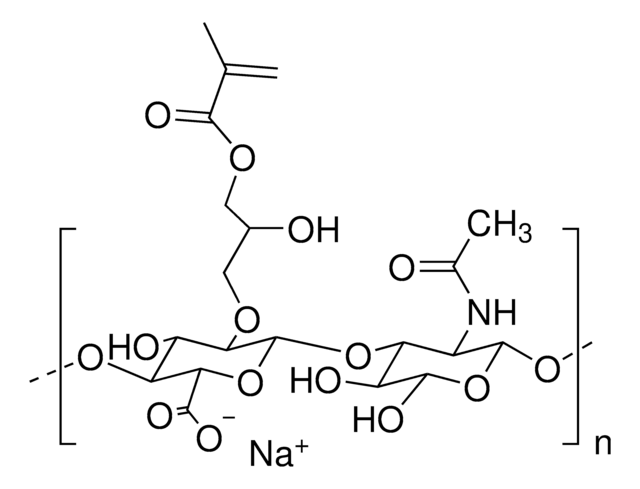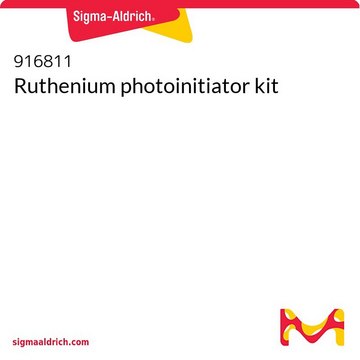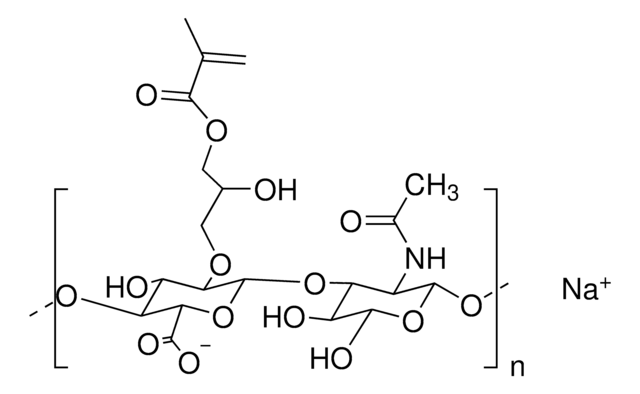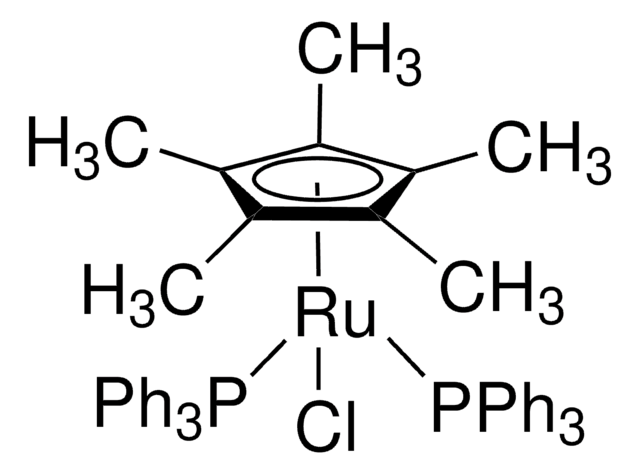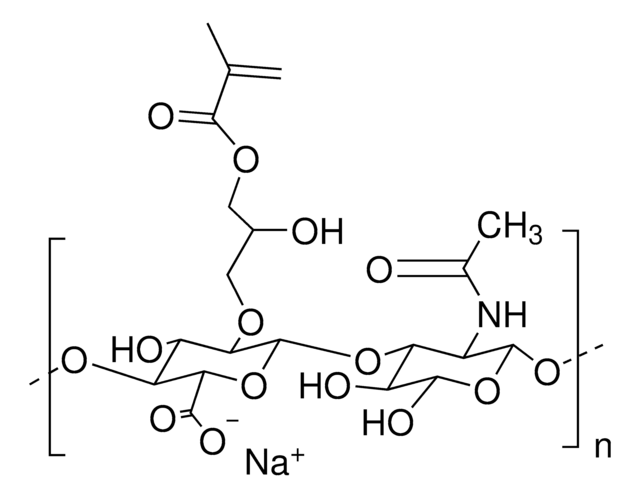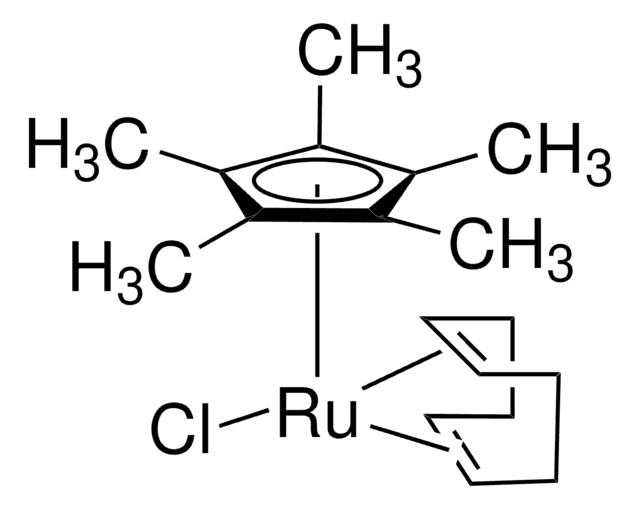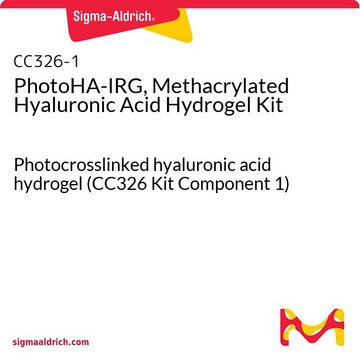Wichtige Dokumente
917338
PhotoHA™-RUT
methacrylated hyaluronic acid bioink kit, with ruthenium
Synonym(e):
3D Bioprinting, Bioink, HAMA, Hyaluronic acid
About This Item
Empfohlene Produkte
Beschreibung
Methacrylated hyaluronic acid:
Degree of methacrylation: ≥ 45-65%
Product components :
Methacrylated hyaluronic acid (100 mg)
Ruthenium (100 mg)
Sodium persulfate photoinitiator (500 mg)
Qualitätsniveau
Sterilität
sterile; sterile-filtered
Mol-Gew.
Mw 100-150 kDa
Lagertemp.
−20°C
Anwendung
Rechtliche Hinweise
Signalwort
Danger
Gefahreneinstufungen
Acute Tox. 4 Oral - Ox. Sol. 3 - Resp. Sens. 1 - Skin Irrit. 2 - Skin Sens. 1 - STOT SE 3
Zielorgane
Respiratory system
Lagerklassenschlüssel
5.1B - Oxidizing hazardous materials
Hier finden Sie alle aktuellen Versionen:
Analysenzertifikate (COA)
Leider sind derzeit keine COAs für dieses Produkt online verfügbar.
Wenn Sie Hilfe benötigen, wenden Sie sich bitte an Kundensupport
Besitzen Sie dieses Produkt bereits?
In der Dokumentenbibliothek finden Sie die Dokumentation zu den Produkten, die Sie kürzlich erworben haben.
Unser Team von Wissenschaftlern verfügt über Erfahrung in allen Forschungsbereichen einschließlich Life Science, Materialwissenschaften, chemischer Synthese, Chromatographie, Analytik und vielen mehr..
Setzen Sie sich mit dem technischen Dienst in Verbindung.
